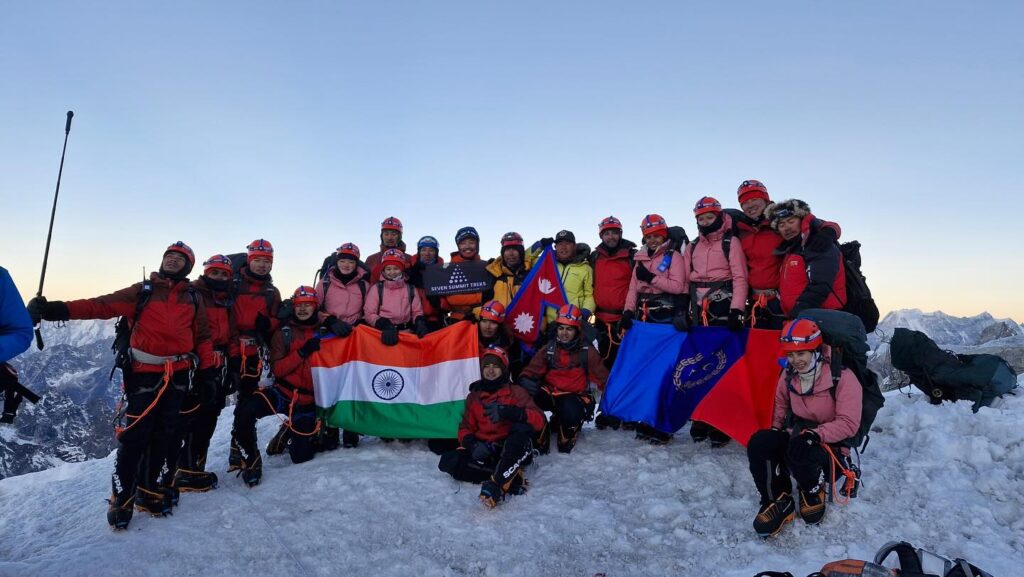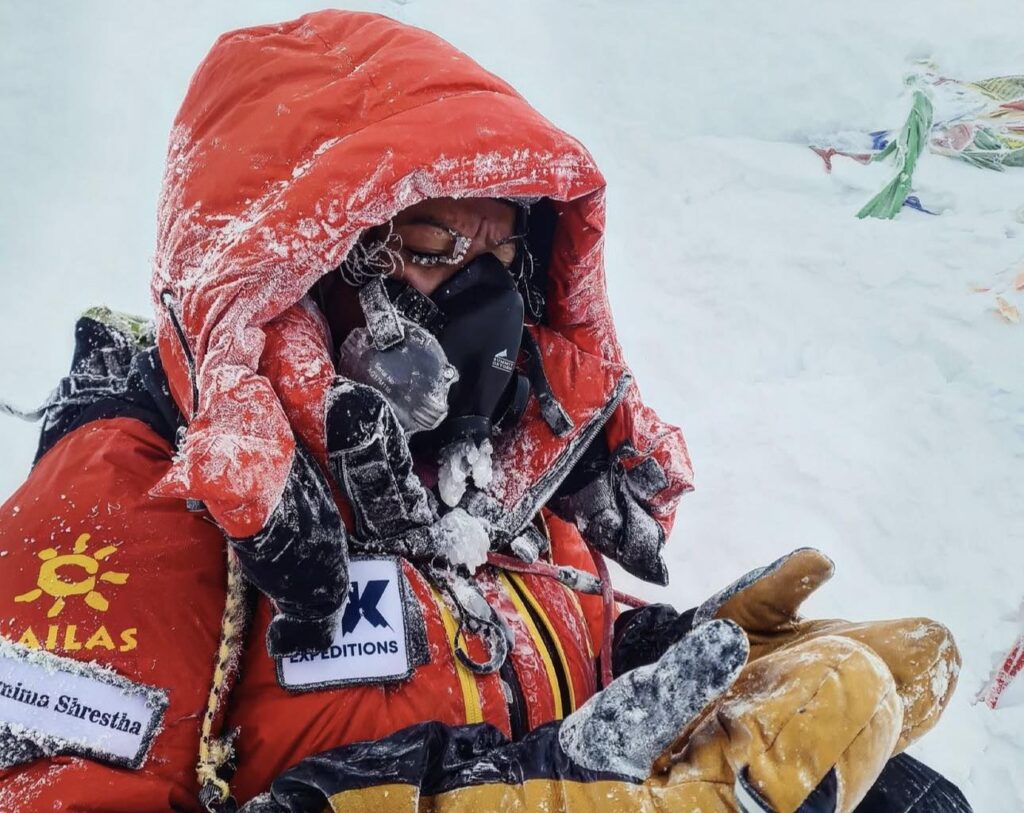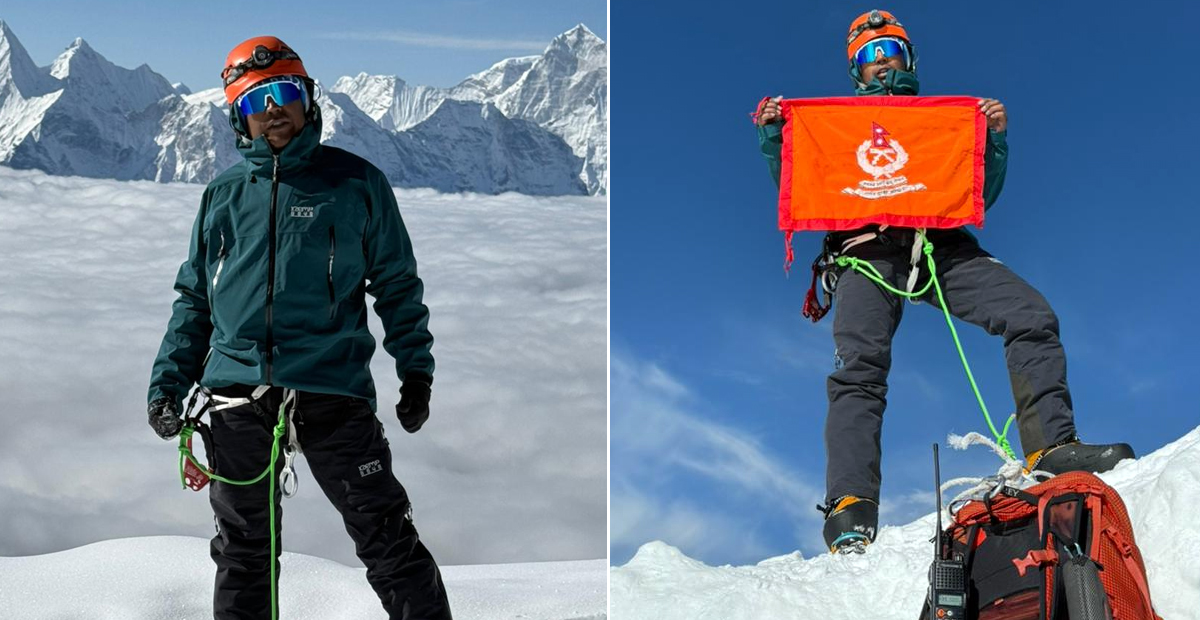A remarkable 135 climbers have successfully reached the summit of Mount Everest in a single day, thanks to a favorable weather window that provided ideal conditions for the ascent. According to the Department of Tourism, this marks one of the highest single-day summits of the ongoing spring climbing season.
The temporary field office of the Department, based at Everest Base Camp, reported that the clear skies and manageable winds today allowed many expedition teams to move forward with their summit bids. This rare weather break in the unpredictable high-altitude climate played a pivotal role in enabling such a large number of climbers to reach the world’s highest point.
Mount Everest Summits
Director of the Department of Tourism, Himal Gautam, shared that May 18 had been identified in advance as a potential day for a “maximum summit plan,” where numerous expedition groups were expected to make their summit attempts. “Despite initial delays and disruptions during the early days of the climbing season, the last three days have seen a surge in successful ascents,” said Director Gautam. “Today alone, 135 climbers have reached the top of Everest.”
This surge in summits comes after days of weather-related interruptions that had previously stalled climbing activities. The calm and cooperative conditions not only helped climbers push toward the summit but also improved safety during the critical final sections of the climb, known for their difficulty and exposure to risk.
The department further confirmed that more climbers are currently on the way and are likely to summit on Monday, May 19, if weather conditions remain favorable. So far, over 200 climbers have successfully reached the Everest summit in this spring season alone, making it one of the most active years for ascents.

Among today’s summiteers was noted Nepali photojournalist and mountaineer Purnima Shrestha, who successfully completed her fifth ascent of Everest. Shrestha, who hails from Aarughat Rural Municipality-10 in Gorkha district, made headlines last year for climbing Everest three times within a single season a record-setting achievement recognized globally.
According to Satori Adventures, the expedition company coordinating her climb, Shrestha reached the summit early this morning, once again proving her resilience and dedication to mountaineering. Her repeated success on the world’s highest peak has inspired a new generation of climbers, particularly women, in Nepal and abroad.
Shrestha’s mountaineering journey began in 2018, and since then she has established herself as a significant figure in Nepal’s adventure and exploration community. Her dual role as a photojournalist adds a unique layer to her achievements, as she not only climbs but also captures compelling stories from the heights of the Himalayas.
The Department of Tourism’s records show that for this spring season, a total of 468 climbers from 47 expedition teams have been granted permits to attempt Everest. This includes 86 female and 382 male climbers, indicating increasing female participation in high-altitude mountaineering a positive trend reflecting changing gender dynamics in adventure sports.
Nepal’s spring climbing season typically runs from late March through May, with May offering the most viable summit opportunities due to relatively stable weather patterns. Climbers often spend weeks acclimatizing at base camps and higher camps before waiting for a narrow window of calm weather to make their summit push.

The mass summiting observed today is a testament to the climbers’ preparation, resilience, and coordination among various stakeholders including guides, Sherpas, and expedition companies. Mount Everest, standing tall at 8,848.86 meters, continues to captivate and challenge climbers from all over the world.
The successful summits also provide a much-needed boost to Nepal’s tourism industry, which heavily relies on mountaineering and trekking activities during the spring and autumn seasons. Local businesses, guides, porters, and tourism operators benefit immensely from the influx of international climbers and adventure seekers.
As the season progresses, more summits are expected, provided that the weather continues to support safe climbing conditions. However, authorities remain vigilant and continue to monitor mountain conditions closely to ensure climbers’ safety.
In recent years, the Department of Tourism has enhanced its monitoring efforts, including setting up temporary field offices and deploying liaison officers to key mountain regions to oversee operations and assist in emergencies. Such initiatives have contributed to better coordination and risk management on the mountains.
With today’s success, Nepal once again proves its vital role as the hub of global mountaineering and adventure tourism. The country’s towering peaks, expert Sherpa guides, and vibrant climbing culture continue to attract the world’s most ambitious climbers year after year.






